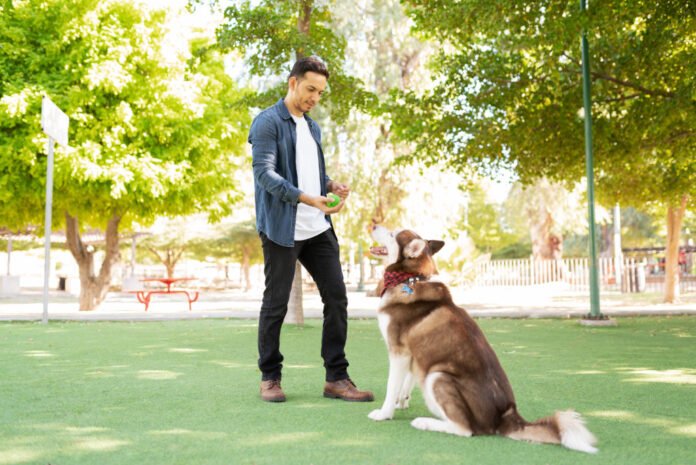Welcoming a new four-legged friend into your life is an exciting adventure, but it also comes with the responsibility of training. Dog training is not just about teaching commands; it’s a journey of building a strong bond and understanding between you and your canine companion.
In this guide, we’ll explore the basics of dog training and how you can completely transform your dog into a well-behaved and happy member of your family.
Understanding Your Dog
Before diving into the training process, it’s crucial to understand your dog’s breed, temperament, and individual quirks. Every dog is unique, and tailoring your training approach to their specific needs will yield the best results.
Take the time to observe your dog’s behavior, learn about their breed characteristics, and be patient as you build a connection with them.
Establishing a Strong Foundation:
The first step in dog training is establishing a strong foundation of basic commands. Start with simple cues like sit, stay, and come. Use positive reinforcement techniques such as treats, praise, and affection to reward your dog for good behavior.
Consistency is key here—repetition and positive reinforcement will help your furry friend understand what you expect from them.
Building a Positive Environment:
Creating a positive training environment is crucial for your dog’s success. Choose a quiet and distraction-free space where you can focus on the training session.
Keep the sessions short and enjoyable, ensuring that your dog associates training with fun and positive experiences. Remember, patience and positivity go hand in hand in the world of dog training.
Addressing Behavioral Issues:
No dog is perfect, and addressing behavioral issues is a natural part of the training process. Whether it’s excessive barking, chewing, or jumping, understanding the root cause of the behavior is essential.
Redirect negative behaviors to positive alternatives and reinforce good behavior through consistent training. Seek professional help if needed, as some behavioral issues may require specialized training techniques.
Socialization Matters:
Socializing your dog is a critical aspect of training. Expose them to various environments, people, and other animals to help them become well-adjusted and friendly.
Gradually introduce new experiences, ensuring that your dog feels comfortable and safe. A well-socialized dog is more likely to be confident and less prone to anxiety or aggression.
The Importance of Exercise:
Regular exercise is not only essential for your dog’s physical health but also plays a significant role in their behavior. A tired dog is a well-behaved dog, so make sure to incorporate daily walks, playtime, and mental stimulation into their routine.
A tired pup is less likely to engage in destructive behaviors, making training more effective.
Conclusion
Dog training is a journey filled with joy, challenges, and a deepening connection between you and your furry friend. Embrace the process, celebrate small victories, and always approach training with love and patience.
Remember, the key to success lies in understanding your dog, being consistent, and creating a positive and enriching environment. With dedication and a wagging tail by your side, you’ll soon have a well-trained and happy companion for life.
